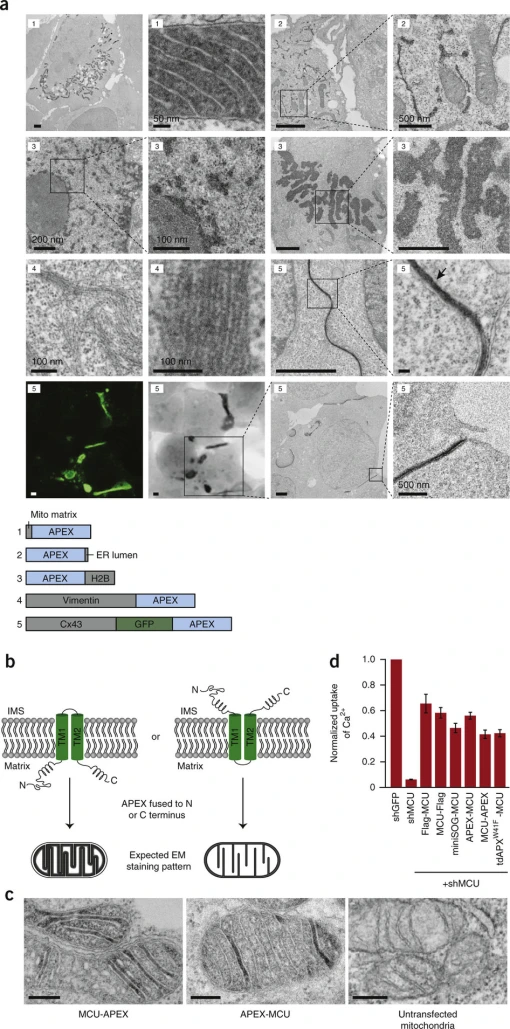The field of connectomics would greatly benefit from a genetically-encoded stain for specific proteins that works intracellularly. This could be used to provide positive contrast for axon tracts or to identify if a synapse is excitatory, inhibitory, or neuromodulatory. Horseradish peroxidase (HRP) is a classic approach to EM staining but does not work in reducing environments, such as inside cells. Several groups (Ting, Looger) have tried to engineer away the di-sulfide bonds of HRP, to allow it to work intracellularly, but all have failed to maintain activity after removing these bonds. An alternative approach, miniSOG, from the Tsien lab, is a genetically-encoded tag that can stain via singlet oxygen generation, but requires light to activate it. In Nature Biotechnology, Alice Ting’s group reports APEX, a perioxidase that works intracellularly, which they then engineered to monomerize and improve staining performance. This tool could find extensive use in connectomics of complex brain tissues.

Leave a comment